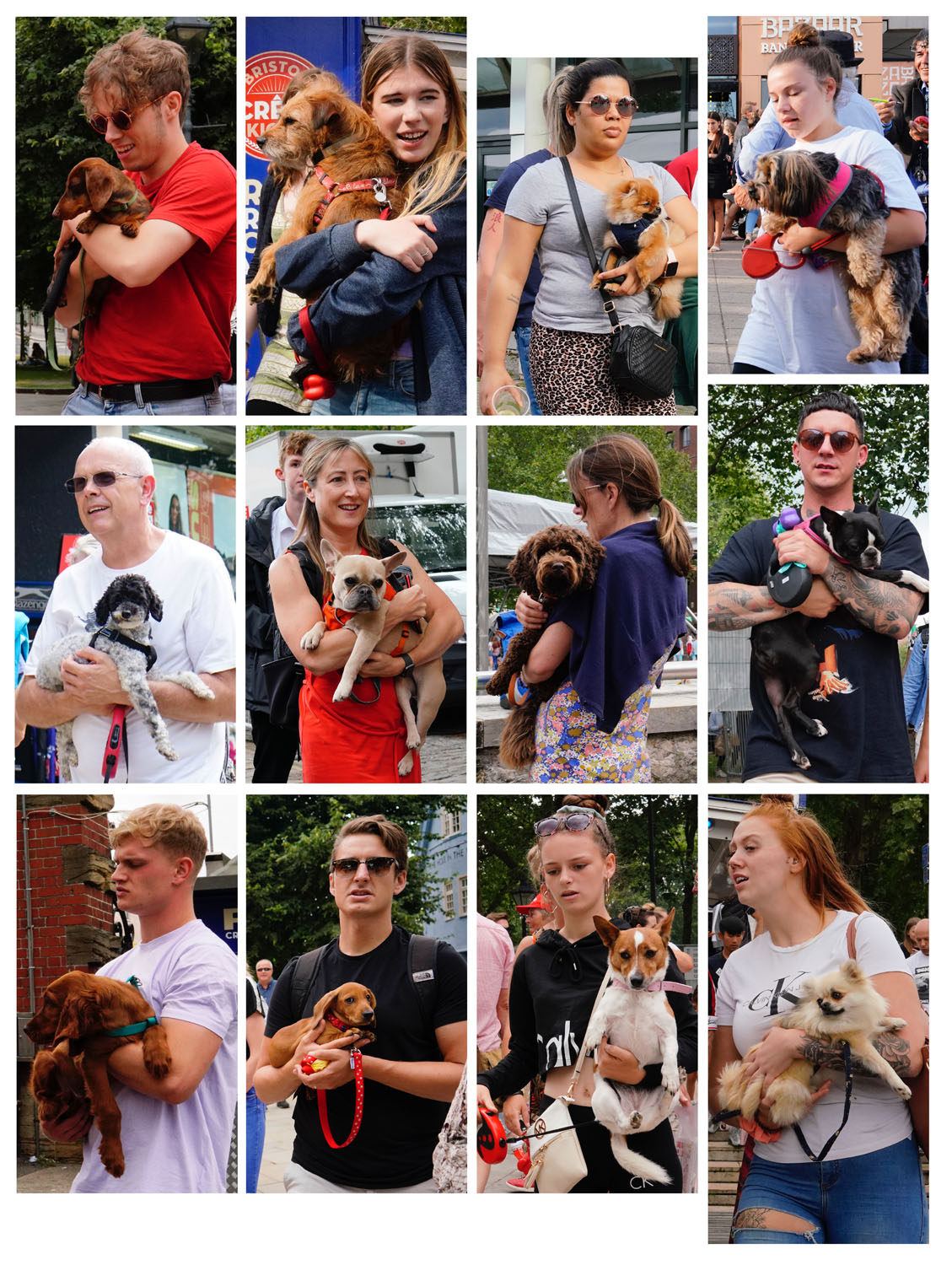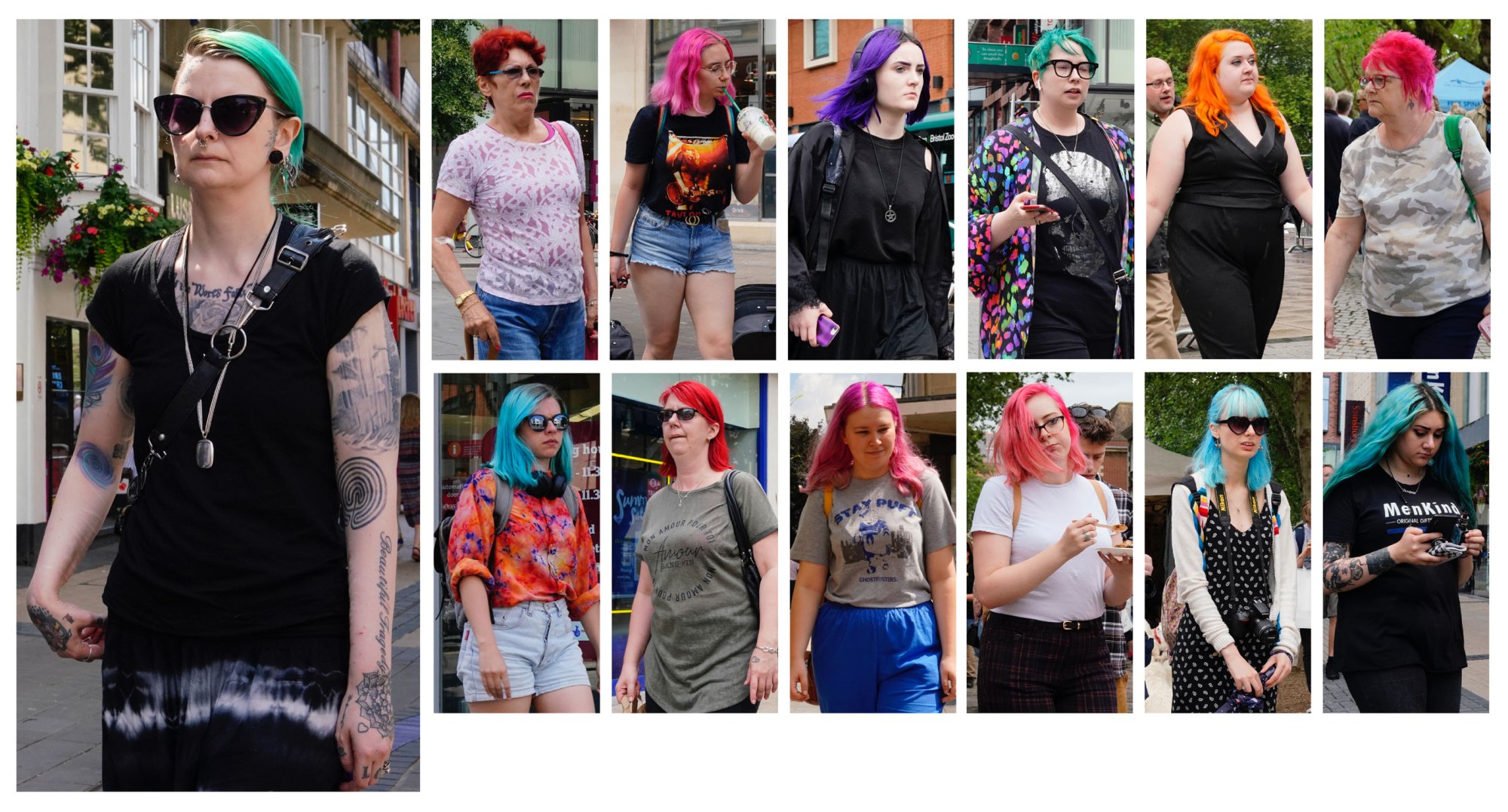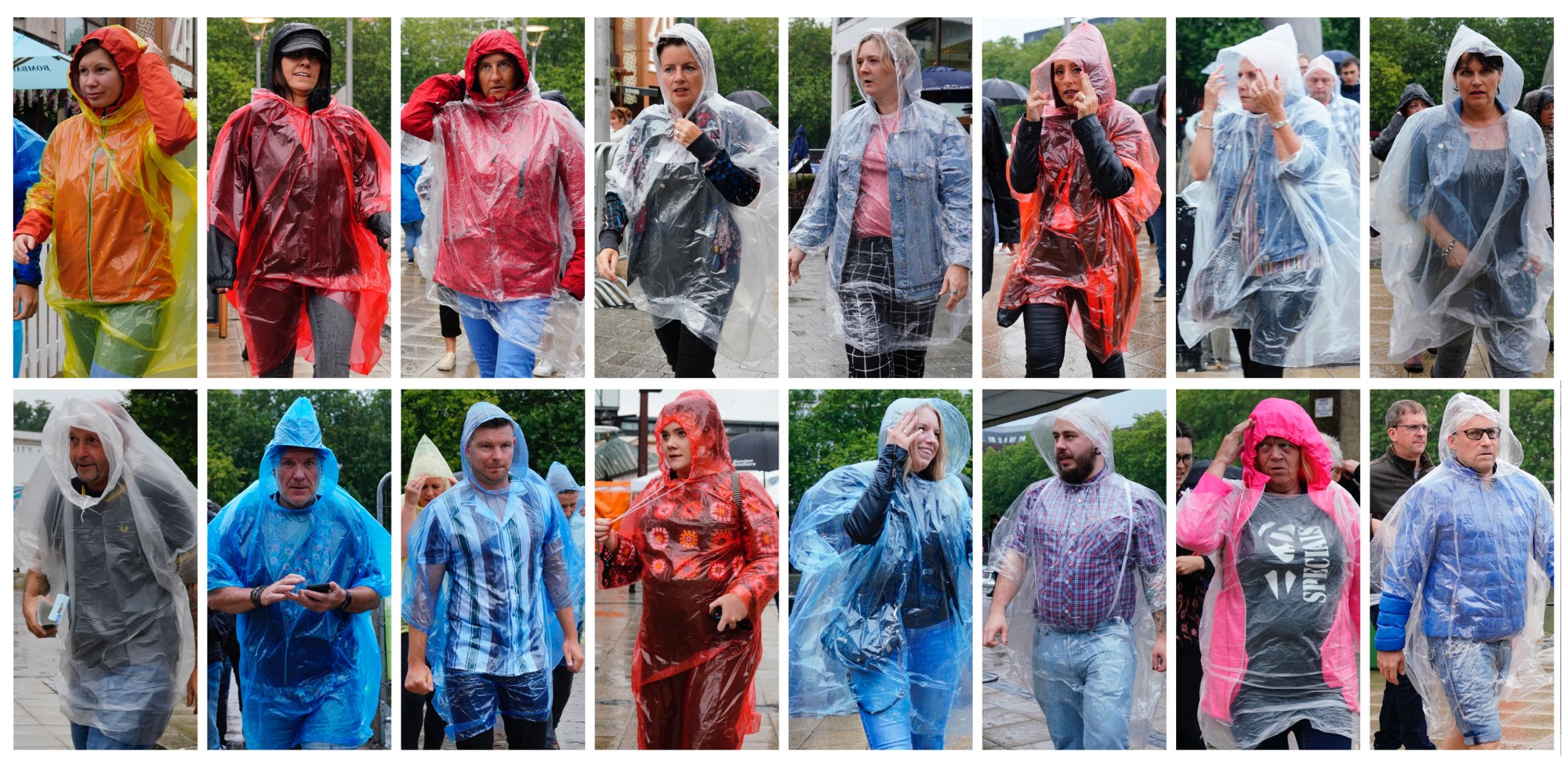“What I do is actually very unclear,” Hans Eijkelboom says. “As a form it seems like a very simple way to collect information about people’s behaviour. But the exhibitions and books that I make do not show any useful and coherent information at all.”
For the past 20 years Hans — born in 1949 in Arnhem, Netherlands — has paced streets from New York to Shanghai with his camera, to capture little points of commonality in the way each city’s inhabitants behave and dress. The resulting project — People of the Twenty-First Century — offers a fascinatingly simple sociological study into individuality in relation to collective behaviour. Across these two decades, and seismic changes to the high street in an increasingly digital age, his approach to finding such similarities has remained largely the same. “The basic working method has not changed over the years,” he says, “but the way I collect subjects and the time in which I photograph those subjects may be different in special cases.”
His latest series — Street Fusion: Bristol in 2019 — is “both a continuation and departure” from this acclaimed project. Staking out in Bristol in the south-west of England, Hans comprehensively photographed the city centre to create an exhibition comprising over 750 images — to be laid out at the Martin Parr Foundation in a grid of three lines of 24 metres.

This project is described as “a continuation of and departure” from your famous ongoing project, People of the Twenty-First Century. Can you tell us how so?
For the first time, my photos are not on display in isolated groups, but as part of a continuous stream of observations during walks in the centre of Bristol. The basis of the exhibition is the question: which is more important for forming our image of the world — the isolated moment or the continuous flow of more or less repeating images that come to us every day? The exhibition has two ambitions: To show a moment from the stream of images that form my world view, and provide a fleeting snapshot of society in Bristol.
You refer to your process as “methodical” while shooting on the street. What is this methodology and how did it differ when shooting on the streets of Bristol?
When I go into a city, I start by observing without any particular goal, waiting for some dominant subject or theme to manifest itself in the streets. This may be women in red coats, women with a particular kind of shopping bag, taxi drivers with their windows down, men in dark suits or people wearing sunglasses. Then I take as many photographs as possible of these people within a maximum of two hours. For the project in Bristol, I adjusted my working method and chose to continue to search for new themes for 11 days and to keep photographing every theme I found.

Given you’ve shot in so many different cities across the world, did you identify anything particular to Bristol and its inhabitants that might distinguish it from your previous series? Or more broadly something British that distinguishes it from the series shot in other countries?
To be honest, I had hoped for that, but in practice I have not actually photographed themes that I could describe as specifically British.
Martin Parr said “if I were a visitor from another planet looking for information on the nature of city life, I would also engage the services of Eijkelboom.” What do you think distinguishes your work from other great street photographers of the 20th and 21st century? How does yours fit into this canon?
That is a difficult issue. I do not see my work as street photography at all, but as a method to show something about the mental state of being of humanity. It is, of course, strange that someone who has not been photographing anywhere other than on shopping streets for a long time does not feel like a street photographer, but for me the street is simply the most appropriate place to use as a means of creating work about the relationship between the individual and society.

Joel Meyerowitz said recently in an interview that the street has lost its innocence, that street photography can no longer be taken in the way it once was. Your work seems unchanging across the decades, why do you think your work transcends this?
My relationship with great street photographers is also complicated there. I think my work is rooted in the visual arts, photography has always been a tool for me. It would also be very pretentious for someone who never looks through the viewfinder to call themselves a photographer.
What do you think is the biggest change or shift in society you can chart from the beginning of your career shooting the street to now?
To me, the street — as a place where changes in our culture first and foremost become visible — does not seem to change… and perhaps has become more important. For the time being it is still the place where the analogue and digital aspects of our society become visible in combination. How long that continues depends on whether the individual wants to and can develop simply by looking at a screen, or whether they need other people in person for that process.
‘Street Fusion: Bristol in 2019’ by Hans Eijkelboom is on show at Martin Parr Foundation in Bristol 22 January – 14 March 2020

Credits
All images © Hans Eijkelboom
